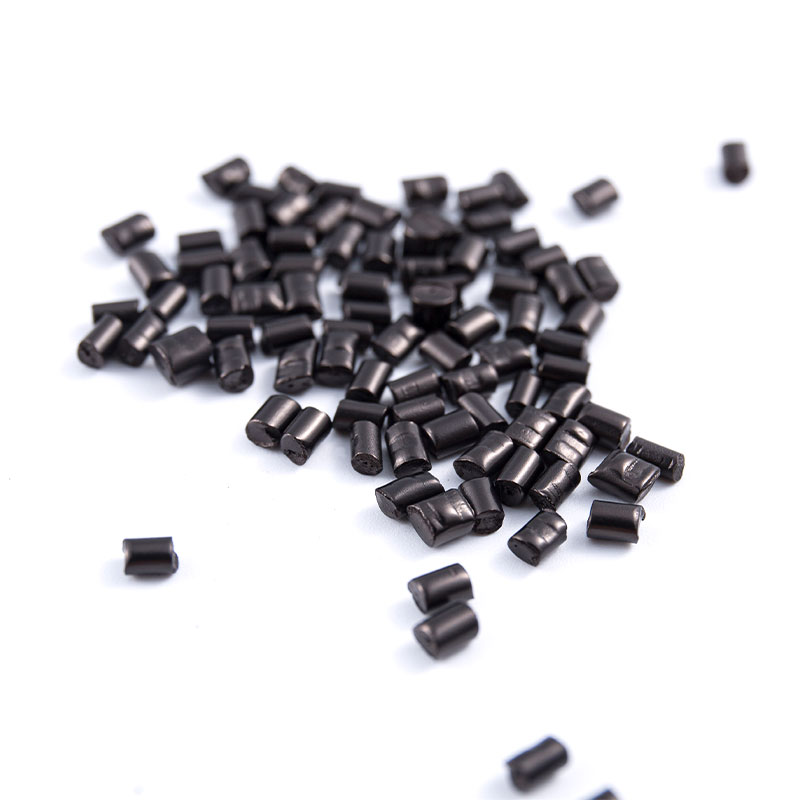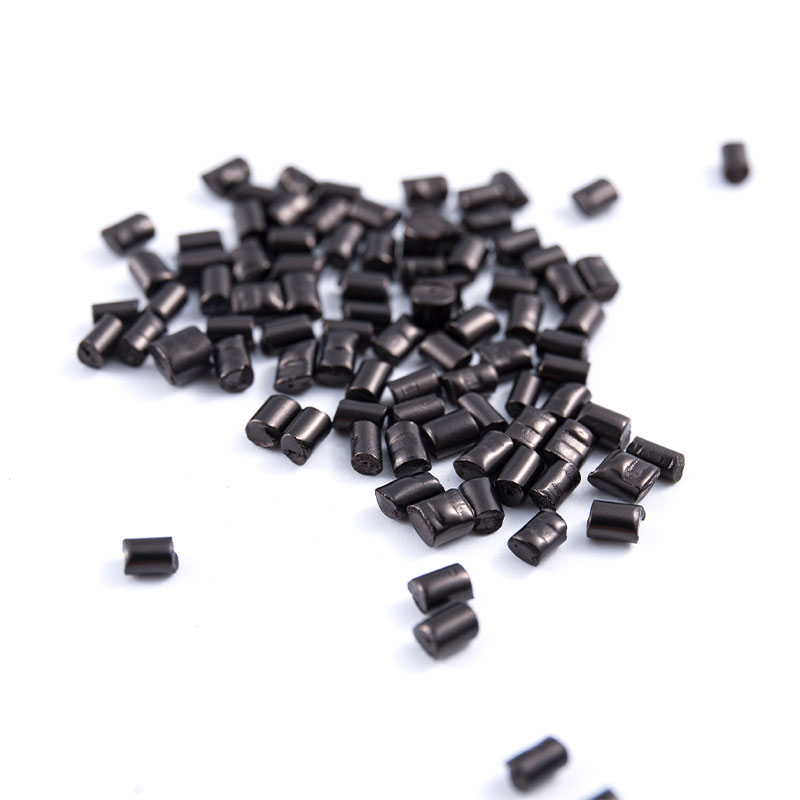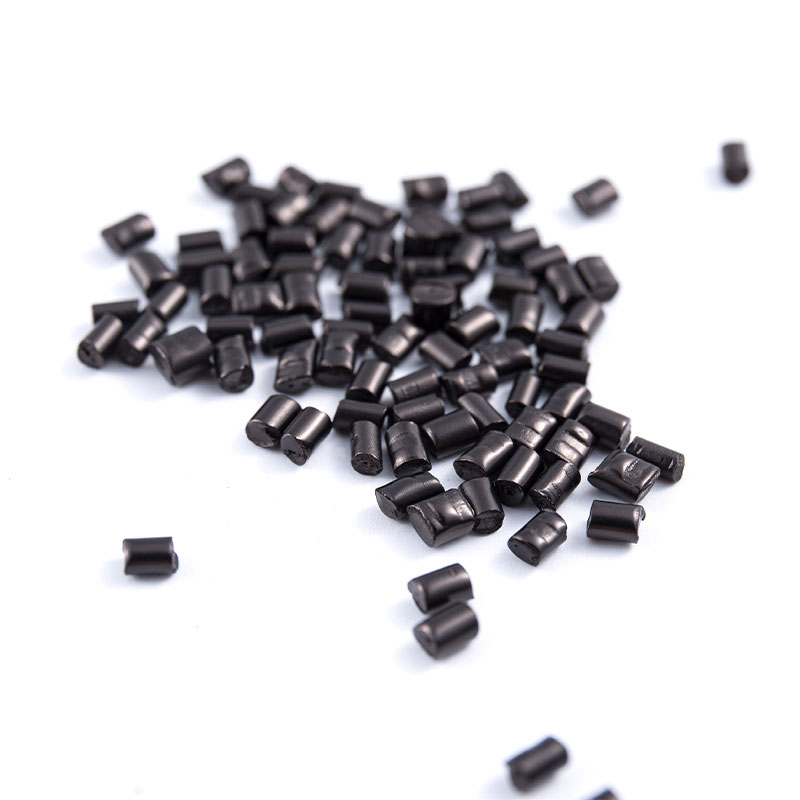Will the compounding and modification black masterbatch produce carbon deposits, sediment, or exhaust smoke in the blending equipment?
Understanding the Processing Behavior of Compounding & Modification Black Masterbatch
Compounding & modification black masterbatch plays an important role in polymer blending lines, where it is used to adjust color depth, dispersibility, rheology, or functional performance of base resins. In these applications, the masterbatch must maintain stable flow characteristics and clean thermal behavior to avoid issues such as carbon deposits, sediment formation, or smoke during extrusion, kneading, or pelletizing. Within E-LUCK’s product systems, these masterbatches are developed through controlled dispersion technology that aligns with the company’s long-term commitment to precision, consistency, and material intelligence. As a result, the materials are designed to maintain stable performance even under continuous high-shear and high-temperature processing conditions commonly found in compounding plants. Understanding how formulation, carrier selection, production control, and process matching interact is essential to determining whether carbonization or volatile emissions are likely to occur in actual production.
Influence of Carbon Black Dispersion on Thermal Stability
Carbon black dispersion quality determines whether the material will agglomerate or degrade under thermal load. When dispersion is insufficient, agglomerates can retain localized heat during extrusion, increasing the probability of carbon deposits along the screw, die lips, or mixing chamber. E-LUCK applies advanced dispersion techniques that reduce particle clustering and improve compatibility between carbon black and polymer carriers. This uniformity assists in minimizing hotspots and maintaining stable thermal transfer. Because compounding & modification black masterbatch is often processed at higher temperatures than standard injection or film grades, its reliability depends heavily on this controlled dispersion. A stable microstructure also reduces the likelihood of sediment formation because particles remain evenly distributed throughout the melt rather than settling at lower-flow zones within the equipment.
Carrier Resin Compatibility and Its Role in Reducing Residues
The choice of carrier resin has a direct influence on whether the masterbatch leaves residues or forms deposits during processing. A mismatched carrier may degrade earlier than the base polymer, leading to char formation, discoloration, or volatile smoke. E-LUCK designs its carrier matrix with resin systems that correspond to common engineering plastics and modified polymers used in compounding applications, including PP, PE, PA, ABS, and high-temperature specialty materials. When the carrier and host resin exhibit similar melt indices, thermal windows, and rheological behavior, the mixture stays stable throughout the blending cycle. This stability helps lower the risk of equipment contamination, especially in long-run compounding lines where processing time is extended.
Below is a table illustrating how compatibility influences processing behavior:
| Carrier Resin Type |
Typical Processing Temperature Range |
Risk of Degradation |
Suitability for Compounding Lines |
| PE-based carrier |
160–220°C |
Low |
Suitable for polyolefin systems |
| PP-based carrier |
170–250°C |
Low |
Suitable for PP modification |
| PA-based carrier |
230–290°C |
Medium |
Suitable for engineering polymers |
| High-temp carriers |
280–340°C |
Controlled |
Suitable for specialty compounds |
Performance of Compounding & Modification Black Masterbatch Under High Shear
Compounding lines such as twin-screw extruders operate at higher shear intensities than typical processing equipment. High shear enhances mixing but also elevates thermal and mechanical stress, which may cause poorly engineered masterbatch materials to degrade. E-LUCK’s engineering principles focus on producing materials with controlled rheology so the black masterbatch can withstand extended shear exposure without producing smoke or volatile residues. The shear-stable formulation enables the carbon black to remain evenly dispersed even under strong mechanical energy input, reducing the probability of sediment accumulation at die exits or in filtration screens.
Effect of Additive Packages on Deposit Formation
Additive packages that enhance performance—such as lubricants, dispersants, stabilizers, or processing aids—also influence whether carbon deposits appear. If additives volatilize at the process temperature or interact poorly with the host polymer, they may contribute to visible exhaust smoke or residues. E-LUCK manages this risk by applying additive systems that are thermally stable and compatible with the resin structures typical in compounding environments. Stabilizer packages within the masterbatch help slow thermal oxidation, which is a common factor behind char formation and sediment buildup. In addition, lubrication control ensures that additives do not accumulate on metal surfaces in mixing chambers or dies.
Impact on Equipment Cleanliness and Maintenance Cycles
Compounding facilities often evaluate black masterbatch by observing screw cleanliness, filter change frequency, and pellet surface quality. If a masterbatch causes carbon deposits, equipment may require more frequent cleaning, directly increasing downtime. E-LUCK’s focus on controlled dispersion and stable carrier design supports cleaner extrusion flow paths and reduces material buildup. This contributes to more predictable maintenance cycles, especially important for facilities blending multiple polymer systems. Stable melt flow reduces micro-residue accumulation on screen packs, which in turn helps maintain back-pressure stability and uniform pellet formation throughout long production runs.
Performance of Compounding & Modification Black Masterbatch Under High Shear
Compounding lines such as twin-screw extruders operate at higher shear intensities than typical processing equipment. High shear enhances mixing but also elevates thermal and mechanical stress, which may cause poorly engineered masterbatch materials to degrade. E-LUCK’s engineering principles focus on producing materials with controlled rheology so the black masterbatch can withstand extended shear exposure without producing smoke or volatile residues. The shear-stable formulation enables the carbon black to remain evenly dispersed even under strong mechanical energy input, reducing the probability of sediment accumulation at die exits or in filtration screens.
Effect of Additive Packages on Deposit Formation
Additive packages that enhance performance—such as lubricants, dispersants, stabilizers, or processing aids—also influence whether carbon deposits appear. If additives volatilize at the process temperature or interact poorly with the host polymer, they may contribute to visible exhaust smoke or residues. E-LUCK manages this risk by applying additive systems that are thermally stable and compatible with the resin structures typical in compounding environments. Stabilizer packages within the masterbatch help slow thermal oxidation, which is a common factor behind char formation and sediment buildup. In addition, lubrication control ensures that additives do not accumulate on metal surfaces in mixing chambers or dies.
Impact on Equipment Cleanliness and Maintenance Cycles
Compounding facilities often evaluate black masterbatch by observing screw cleanliness, filter change frequency, and pellet surface quality. If a masterbatch causes carbon deposits, equipment may require more frequent cleaning, directly increasing downtime. E-LUCK’s focus on controlled dispersion and stable carrier design supports cleaner extrusion flow paths and reduces material buildup. This contributes to more predictable maintenance cycles, especially important for facilities blending multiple polymer systems. Stable melt flow reduces micro-residue accumulation on screen packs, which in turn helps maintain back-pressure stability and uniform pellet formation throughout long production runs.
Thermal Behavior and Smoke Generation in Blending Equipmen
Smoke formation is typically associated with volatile components decomposing at process temperatures. When the compounding & modification black masterbatch contains low-boiling impurities or unstable additives, smoke may appear at venting areas or feeding zones. E-LUCK mitigates this issue by selecting controlled-purity carbon black sources and refining dispersion processes to reduce entrapped volatiles. This aligns with the company’s principle of material intelligence, ensuring that formulations remain consistent during repeated heating cycles. As a result, the masterbatch behaves predictably during high-temperature blending and produces minimal smoke under standard compounding conditions.
Influence of Processing Window on Carbon Deposit Formation
A well-designed processing window enables operators to maintain temperature and shear within stable ranges that prevent carbonization. If a masterbatch’s processing window is too narrow, slight deviations may lead to degradation. E-LUCK’s compounding-oriented formulations offer broader temperature flexibility, enabling the masterbatch to withstand fluctuations common in industrial blending lines. This reduces the risk of carbon deposits forming when operators adjust screw speed, feed rate, or venting conditions to accommodate different polymers. A stable window also supports consistent pelletization without residue accumulation at the die face.
| Masterbatch Type |
Typical Processing Temperature Window |
Sensitivity to Overheating |
Expected Cleanliness |
| Standard MB |
Narrow |
Medium |
Moderate |
| High-dispersion MB |
Medium |
Low |
High stability |
| Compounding & Modification MB |
Broad |
Low |
Suitable for industrial blending |
Operational Practices That Help Prevent Residues or Smoke
Even with stable masterbatch formulations, operational practices play a significant role. Compounding equipment should be preheated to uniform temperature to avoid cold-start degradation. Screw configurations should match the viscosity profile of both the masterbatch and base polymer to maintain stable mixing without unnecessary friction. Regular venting ensures that any remaining volatiles escape before causing smoke. E-LUCK provides technical guidance for customers integrating its compounding & modification black masterbatch into different production lines so that the material’s performance aligns with equipment characteristics. This collaborative approach helps maintain clean operation and predictable product outcomes.
Will the Masterbatch Produce Carbon Deposits, Sediment, or Smoke?
When considering the combined influence of dispersion technology, carrier selection, additive stability, thermal behavior, and operational practices, a properly engineered compounding & modification black masterbatch is not expected to generate carbon deposits, sediment, or smoke under standard processing conditions. E-LUCK’s formulations are designed to support continuous industrial blending where consistent color, stable melt behavior, and clean processing are required. The company’s emphasis on precision and consistency in its production methods enhances the predictability of the material’s performance in high-shear, high-temperature environments typical of polymer compounding lines. While final performance always depends on process control and equipment condition, the structural design of the masterbatch minimizes the common risks associated with char, residue, or volatile emission.

 English
English Español
Español













